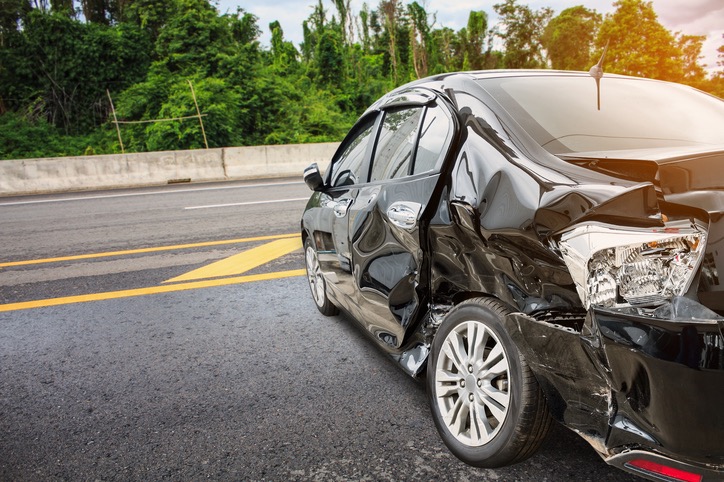How Do I Prove My Pain and Suffering After A Car Accident?
If you’ve been injured in a car accident due to someone else’s negligence, you will likely be able to include a claim for pain and suffering as part of your car accident case.
After you have established that the defendant did indeed cause the accident and your injuries, you will have to prove financial losses so you can claim the money needed to start rebuilding your life.
The money for these losses is known as damages.
For some damages, it is easy to put a dollar amount on how much money you are owed.
For things like medical bills and property damage, you just add up your medical bills and treatments and provide receipts.
But the damages for our injuries go far beyond our medical bills and property damage.
So, how do you prove and then calculate your pain and suffering after a car accident?
To prove pain and suffering and then justifying it to an adjuster and then putting a dollar amount on it is much more complicated than adding up your medical bills.
An experienced personal injury attorney can help you prove and calculate pain and suffering beyond a shadow of a doubt.
But, it’s still good to have a general understanding of how to prove and calculate pain and suffering in a car accident case before making pain and suffering claims.
Continue reading to learn more.
I met with Harry Brown personally and he sat with me for 20 minutes at our initial consultation to explain everything. He even called after my surgery to see how I was doing. I met with him several more times after that and was kept informed about my case throughout. I highly recommend Harry Brown as an attorney.
Pain and Suffering Damages Are General Damages
After a car accident, there are two types of pain and suffering that you are likely to experience.
The first is for your physical pain and suffering. The second is for the mental distress that accompanies your physical injuries and the events surrounding your accident.
These are known as “general damages.”
There is no set formula or foolproof way to value general damages.
There are several types of injuries you can sustain during a car accident.
With several types of injuries, the injury’s significance is general knowledge, so it can be assumed that the injury is painful.
For example, a concussion after a car accident will require medical treatment, and a traumatic brain injury could require surgery.
Your concussion or brain injury will require time to heal that usually includes missed time off of work.
Sometimes a traumatic brain injury can be so severe that it never returns to “normal.”
Most people realize that the injury and recovery can cause extensive physical and mental suffering.
But, for injuries that aren’t so obvious, like a soft tissue injury, the pain and suffering isn’t as obvious.
Soft tissue injuries like bruises and cuts are very obvious to most people.
They are a direct result of something impacting skin or muscle and damaging the tissue.
But a soft tissue injury like whiplash is much less obvious.
Damage to muscles, ligaments, tendons, and your other soft tissues won’t show up in an x-ray, so there is less conclusive evidence that an injury has occurred.
But most of us have experienced an injury like this, whether it was a sprained ankle or wrist, so we know that the pain is very real and can be severe.

Proving Your Pain and Suffering After a Car Accident
To win your pain and suffering claim, you first have to prove pain and suffering.
Pain and suffering will vary from case to case, so you have to think about how your injuries have affected your lifestyle and emotional well-being.
You also have to think about how your pain and suffering will interfere with your life.
Your current pain and suffering are what you will endure from the time of your injury until your medical treatments are completed. It has an endpoint, and its duration can be measured.
Future pain and suffering is what you will endure after your treatments have ended into the foreseeable future.
It isn’t possible to know when it will end.
If you can make a complete recovery from your injuries, and you don’t expect to have any lingering issues, you can ask for one or two times the amount of your economic damages.
If you aren’t able to make a complete recovery in a reasonable amount of time, and you expect to face ongoing issues with your injuries, including issues with your mental health, you will be justified in asking for a larger amount of pain and suffering.
No matter what you ask for in pain and suffering damages in your injury case, you will have to convince the adjuster or judge and jury of the negative effect the injuries have had on your quality of life.
Evidence is Important For Your Claim
Before deciding what to ask for your pain and suffering damages, you need to figure out how you will convince the adjuster to accept your demand.
Your personal injury attorney will be experienced in this and will know what to do.
First, you will list the reasons why your pain and suffering demand is justified. You will use this list later in settlement negotiations.
Your argument has to be logical, based on facts, and supported by evidence to prove pain and suffering.
Medical records will be crucial in backing up your claims for pain and suffering and emotional distress.
Make sure you tell your doctors how your injuries have been affecting your daily activities.
Along with the list you’ve already made, you should include a copy of your relevant medical records.
These records can include:
- Your doctor restricting you from lifting more than 10 pounds. This leaves you unable to care for your small child.
- You can’t sleep, but when you do, you have nightmares. Your doctor prescribes you sleeping pills.
- You can’t drive for two weeks, so you are forced to rely on others to take your children to school.
- You see a counselor to treat the depression caused by the long and painful recovery from your injuries.
Photographs of your injuries throughout your treatments will paint a clear picture of your pain and suffering.
Pictures of you in your mangled car, in a hospital bed, and during rehabilitation will be very compelling.
You also need witness statements.
In the same way you can ask someone who saw your accident to provide a witness statement, you can ask the people closest to you, like your family, friends, and neighbors, to write down what you have had to deal with since your car accident.
They may write about how they’ve helped you with:
- Meals
- Yardwork
- Housework
- Childcare
- Pet care
- Transportation
The people you’re closest to can detail what you haven’t been able to do for yourself after your injury, but you will have to describe how it’s made you feel.
It’s a good idea to keep a journal with detailed notes about how the accident has impacted your quality of life and happiness.
Be as descriptive as you can when you explain:
- Daily pain levels
- Needing help with personal hygiene or toileting
- Not being able to work, cook, or perform other typical tasks
- Fear of not making a complete recovery
- Missing important holidays or other special occasions
- Sadness or depression stemming from your accident and injuries
To get the settlement you deserve, you have to put your pain and suffering into words that are easy to understand and persuasive to the adjuster.
Make sure to take enough time to think about what you have lost or will lose and how you have suffered and will suffer because of the injury.
You only have one chance to win your settlement, so don’t hold anything back.
The better you can convince the adjuster of the depth of your pain and suffering, the higher your final settlement will be.
If you were severely injured and need to focus on your physical recovery, or if you just aren’t comfortable dealing with the insurance company, you should speak to a personal injury attorney about the value of your pain and suffering.
Good personal injury lawyers offer free consultations, so it won’t cost you anything to find out what a good attorney can do for you.
How Do Insurance Companies Evaluate Pain and Suffering?
Before you try to convince your insurance company of your pain and suffering damages, you should understand that insurance companies begin their analysis with a critical assumption: if you never seek medical attention, you probably weren’t hurt.
There are exceptions to every rule, sure, but if you don’t seek medical attention for injuries after your accident, you won’t be able to receive pain and suffering damages.
Injuries that result in a greater amount of medical treatment will result in more pain and suffering than injuries that need minimal medical treatment or none at all.
Your insurance company will also assume that an injury that requires a lengthy recovery time will cause more pain and suffering than injuries with a short recovery time.
These assumptions will affect how your insurance adjuster will value your injury claim.
If you choose not to receive medical attention after your accident, you probably won’t have much value attached to your injury by your insurance company.
Even if you are in pain and have suffered injuries, if you don’t seek medical attention or seek it fast enough, your insurance company could assume the injuries aren’t that bad or were caused by something other than your accident.
Your insurance companies will have to take you at your word that you are injured, and your injuries were due to the car accident.
They will need more evidence than that.
You will have a higher value placed on your injuries if you seek medical attention and there is medical corroboration of your injury.
If you’ve suffered a soft tissue injury that isn’t immediately obvious and you seek medical treatment for the injury, your doctor will listen to the description of your symptoms and conduct a physical exam.
After your exam, your doctor will note the findings from your physical examination in your medical records and that you visited their office and complained of pain or discomfort in certain areas of your body soon after your car accident.
Your insurance company will review your medical records, and when they see that you took the time to visit the doctor soon after your accident, it will add some evidence of the validity of your injury.
If you weren’t really in pain, you wouldn’t have gone to all that effort to relieve the pain.
This also applies to lost wages from work.
There’s a good chance that you only get paid if you show up to work, so if you took off work because of your car accident, it would support your claim that you have experienced pain and suffering after your accident.
Check out a related post: Who is Liable if my Car is Involved in an Accident but I was not Driving?
Speak to an Experienced Personal Injury Attorney
When you visit The Brown Firm, they will review every detail in your case to give you the best possible advice and guidance related to your case.
The Brown Firm has helped countless pain and suffering victims, and they are ready to help you with yours.
The Brown Firm Car Accident Lawyers will help you by working tirelessly on your case so you can focus on your physical recovery while they handle your pain and suffering.
Calculating pain and suffering isn’t an easy task, and you shouldn’t do it on your own.
Let The Brown Firm help you with your personal injury claim so they can maximize your pain and suffering settlement.
Give The Brown Firm a call today or click the button below for a free consultation with an experienced attorney so they can get you the compensation you deserve.
Ready to Talk to a Lawyer Who Has Your Back?
Our Recent Personal Injury Articles
E-Bikes and Accidents: New Risks and Legal Considerations
A bus caught fire on Friday night at Ashford Dunwoody Road and I-285 West, causing delays during rush hour. The ramp was closed, and firefighters were able to put out...
Using Telematics Data to Prove Driver Behavior
A bus caught fire on Friday night at Ashford Dunwoody Road and I-285 West, causing delays during rush hour. The ramp was closed, and firefighters were able to put out...
Why Teenagers are the Most Dangerous Drivers on the Road
A bus caught fire on Friday night at Ashford Dunwoody Road and I-285 West, causing delays during rush hour. The ramp was closed, and firefighters were able to put out...
Slip and Fall Accidents in Retail Stores: Who’s Liable?
A bus caught fire on Friday night at Ashford Dunwoody Road and I-285 West, causing delays during rush hour. The ramp was closed, and firefighters were able to put out...
Bicycle Accidents: A Growing Concern for Urban Cyclists
A bus caught fire on Friday night at Ashford Dunwoody Road and I-285 West, causing delays during rush hour. The ramp was closed, and firefighters were able to put out...
Understanding Nursing Home Abuse: Signs, Symptoms, and Solutions
A bus caught fire on Friday night at Ashford Dunwoody Road and I-285 West, causing delays during rush hour. The ramp was closed, and firefighters were able to put out...
Slip and Fall Accidents in Hotels: Establishing Liability
A bus caught fire on Friday night at Ashford Dunwoody Road and I-285 West, causing delays during rush hour. The ramp was closed, and firefighters were able to put out...
Types of Nursing Home Abuse: Physical, Emotional, and Financial
A bus caught fire on Friday night at Ashford Dunwoody Road and I-285 West, causing delays during rush hour. The ramp was closed, and firefighters were able to put out...
Rabies and Other Infectious Diseases Transmitted by Dog Bites
A bus caught fire on Friday night at Ashford Dunwoody Road and I-285 West, causing delays during rush hour. The ramp was closed, and firefighters were able to put out...
Lane Splitting and Motorcycle Accidents: Legal Perspectives
A bus caught fire on Friday night at Ashford Dunwoody Road and I-285 West, causing delays during rush hour. The ramp was closed, and firefighters were able to put out...
Contact The Brown Firm
Get the Answers and Compensation You Deserve
You’ll notice the difference when you contact The Brown Firm! Our local dedicated attorneys want to help you recover and rebuild.
Schedule your free consultation by calling (800) 529-1441 or completing our simple online form.

